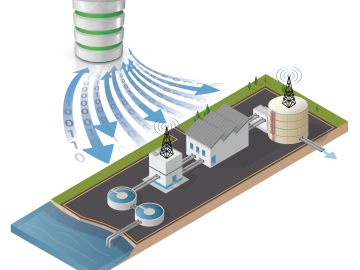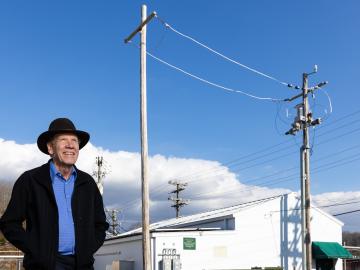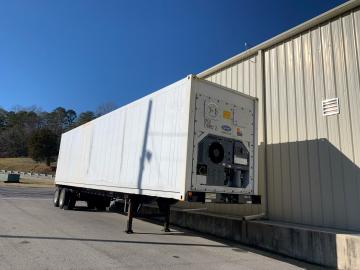
Filter News
Area of Research
- (-) Energy Science (87)
- (-) Supercomputing (69)
- Advanced Manufacturing (14)
- Biological Systems (2)
- Biology and Environment (64)
- Biology and Soft Matter (1)
- Building Technologies (2)
- Computational Biology (2)
- Computational Engineering (2)
- Computer Science (12)
- Fusion and Fission (8)
- Fusion Energy (3)
- Isotopes (21)
- Materials (62)
- Materials for Computing (12)
- Mathematics (1)
- National Security (14)
- Neutron Science (27)
- Nuclear Science and Technology (9)
- Quantum information Science (6)
News Type
News Topics
- (-) 3-D Printing/Advanced Manufacturing (49)
- (-) Bioenergy (14)
- (-) Biomedical (14)
- (-) Chemical Sciences (6)
- (-) Computer Science (73)
- (-) Coronavirus (17)
- (-) Isotopes (1)
- (-) Mercury (2)
- (-) Microscopy (6)
- (-) Physics (4)
- (-) Space Exploration (5)
- Advanced Reactors (3)
- Artificial Intelligence (25)
- Big Data (22)
- Biology (12)
- Biotechnology (3)
- Buildings (28)
- Clean Water (7)
- Composites (11)
- Critical Materials (8)
- Cybersecurity (7)
- Energy Storage (45)
- Environment (48)
- Exascale Computing (17)
- Fossil Energy (1)
- Frontier (18)
- Fusion (1)
- Grid (29)
- High-Performance Computing (28)
- Hydropower (3)
- Machine Learning (11)
- Materials (22)
- Materials Science (23)
- Mathematics (4)
- Microelectronics (1)
- Nanotechnology (8)
- National Security (4)
- Neutron Science (9)
- Nuclear Energy (6)
- Partnerships (4)
- Polymers (8)
- Quantum Computing (15)
- Quantum Science (15)
- Security (4)
- Simulation (14)
- Software (1)
- Statistics (1)
- Summit (29)
- Transportation (50)
Media Contacts

A team of researchers has developed a novel, machine learning–based technique to explore and identify relationships among medical concepts using electronic health record data across multiple healthcare providers.

Tackling the climate crisis and achieving an equitable clean energy future are among the biggest challenges of our time.

When Andrew Sutton arrived at ORNL in late 2020, he knew the move would be significant in more ways than just a change in location.

A study by researchers at the ORNL takes a fresh look at what could become the first step toward a new generation of solar batteries.

University of Pennsylvania researchers called on computational systems biology expertise at Oak Ridge National Laboratory to analyze large datasets of single-cell RNA sequencing from skin samples afflicted with atopic dermatitis.

Oak Ridge National Laboratory scientists worked with the Colorado School of Mines and Baylor University to develop and test control methods for autonomous water treatment plants that use less energy and generate less waste.

Bruce Warmack has been fascinated by science since his mother finally let him have a chemistry set at the age of nine. He’d been pestering her for one since he was six.

To explore the inner workings of severe acute respiratory syndrome coronavirus 2, or SARS-CoV-2, researchers from ORNL developed a novel technique.

A new version of the Energy Exascale Earth System Model, or E3SM, is two times faster than an earlier version released in 2018.

Oak Ridge National Laboratory researchers have retrofitted a commercial refrigeration container designed to ensure COVID-19 vaccines remain at ultra-low temperatures during long transport and while locally stored.


